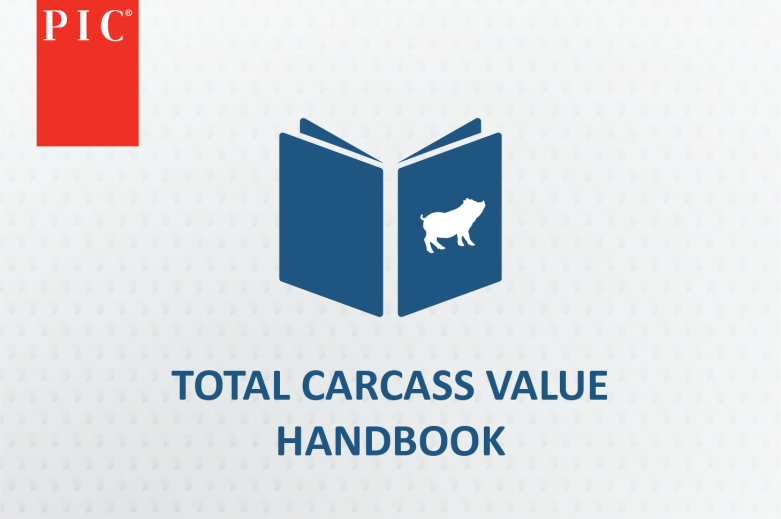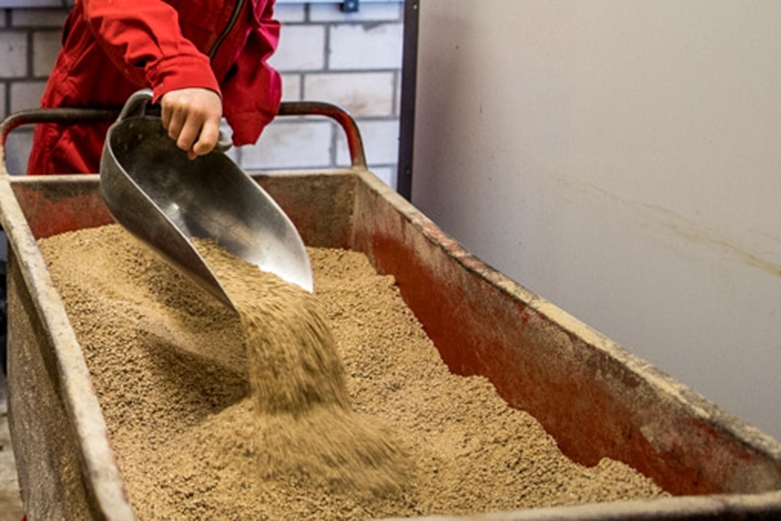How PIC® is driving quality and value across the pork supply chain.
Meat quality is a key driver of consumer demand and overall pork industry profitability. Consistently delivering high-quality pork requires a combination of genetic improvement, optimized management and precise measurement tools.
For over 30 years, PIC has been at the forefront of pork quality with continuous innovation and strategic genetic selection. In 1990, PIC became the first to use a DNA probe to test for the Halothane gene—a breakthrough which allowed us to characterize its impact and ultimately remove it from our populations.
This commitment to innovation continued throughout the decades:
1996: Published PIC Pork Quality Blueprint to outline industry standards for pork quality.
1998: Began selecting for ultimate pH to improve quality, water holding capacity and color.
2003: Initiated GN Crossbred program, aiding in prediction and improvement of carcass and pork quality traits using data collected annually from over 100,000 market pigs.
2007: Implemented selection of marbling using ultrasound.
2009: Began lactate testing as a stress indicator.
2012: Characterized fatty acid profiles of pure lines.
2018: Added direct selection for tenderness and primal values.
2020: Created PIC® Pork Quality Compass™ programme [optional: add url to Pork Quality Compass article, only if on local site, to avoid driving page visitors aways from this site], a global benchmark that allows processing plants to objectively assess their pork quality performance.
“Meat quality isn’t a new focus for us—it’s something we’ve been investing in for years,” says Brandon Fields, Applied Meat Science Director at PIC. “Over time, we’ve adopted new tools, refined our selection criteria and partnered across the industry to enhance pork quality.”
Delivering Results with the PIC®800
The results of PIC’s long-term investment in meat quality are evident in the PIC800, who outperforms the PIC Pork Quality Compass™ industry benchmark in key metrics impacting eating experience and consumer preference.
Loin Ultimate pH: PIC800 outperformed the industry benchmark with an ultimate pH of 5.75 compared to 5.67. [1] pH is a critical component of pork quality, impacting water holding capacity, colour, firmness and eating quality.
Marbling: PIC800 demonstrated a 0.161 advantage in marbling over the industry benchmark. [1]


“The PIC800 is a great example of how we balance meat quality with efficiency,” says Justin Holl, PIC Product Development Director. “Through strategic genetic selection, we’re delivering a product that benefits both producers and the entire pork supply chain.”
Investing in Novel Technologies
PIC continues to lead in meat quality innovation by adopting advanced measurement tools and exploring new traits. Utilizing technology like computer vision to assess meat quality provides more accurate evaluations of colour and marbling.
“The more precise our measurements, the better our genetic selection can be. These technologies allow us to collect more accurate data and accelerate progress” explains Holl.
Beyond current measurements, PIC is investigating new traits that influence meat quality, including fat quality, muscle structure and consumer-driven factors like flavour.
Commitment to Continuous Improvement
Beyond genetics, PIC is deeply committed to advancing meat quality across the industry. The PIC Applied Meat Science team partners directly with commercial processors around the globe. From optimizing animal handling to chilling, this collaboration ensures that the potential for quality built into PIC genetics is fully realized at every stage of the supply chain.
“Genetics are the foundation, but around 70% of pork quality outcomes are influenced by environmental factors,” explains Fields. “Our team provides science-backed support to help processors consistently deliver the quality their customers expect.”
To support continuous improvement, the PIC Pork Quality Compass™ benchmarking program provides standardized, objective data from more than 50 processing plants worldwide. This enables plants to identify opportunities, monitor progress and elevate their quality standards.
As the industry evolves, PIC remains committed to meat quality.
“We’re not just following industry trends, we’re working to set them,” says Fields. ” Through technology, genetic improvement and collaboration, we’re delivering high-quality pork that adds value across the supply chain.”
To learn more about PIC’s approach to meat quality, explore pork quality tools [optional: add url to https://www.pic.com/resources/pic-pork-quality-tools/?, only if on local site, to avoid driving page visitors aways from this site] or contact PIC at AppliedMeats@genusplc.com.
[1] Average benchmark data from 2023 and 2024 U.S. and Canadian commercial pork plants with annual slaughter capacity of approximately 62 million pigs. PIC®800 pork quality data from approximately 3,125 commercial pigs.




